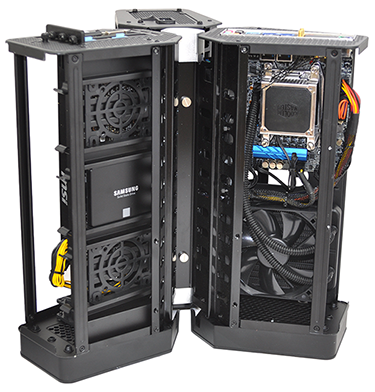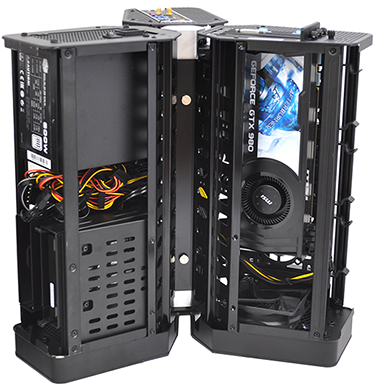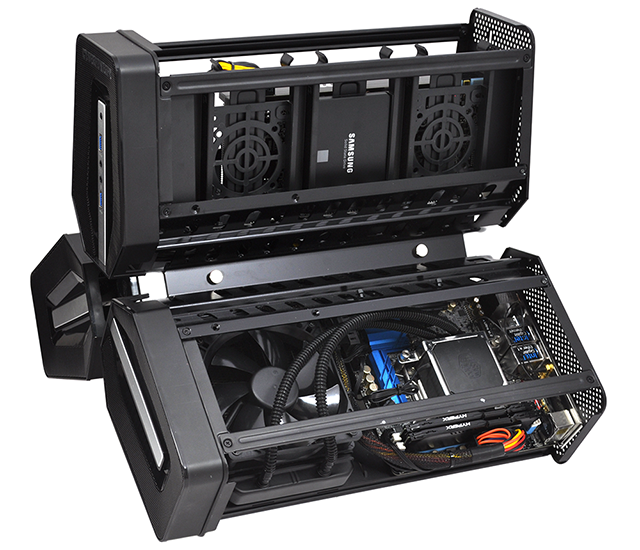techzone
Wednesday, February 16, 2022
Saturday, March 3, 2018
5G news
Deutsche Telekom, Intel and Huawei Achieve World's First 5G NR Interoperability in Operator Environment
[Bonn, Germany, February 23, 2018] Deutsche Telekom, Intel and Huawei prove the world's first 5G interoperability and development testing (IODT) based on the 3GPP R15 Standard with a commercial base station in an operator lab environment. This successful test in Bonn, Germany, is another important milestone after the three partners initially verified the first 5G NR interoperability in Huawei’s Shanghai labs.
The test is based on Huawei's 5G commercial base station and Intel's third generation 5G NR Mobile Trial Platform (MTP). It is a critical step towards the early development of full commercial 5G equipment in 2019, accelerating the 5G ecosystem.
Deutsche Telekom and Huawei began cooperation on 5G network research in 2015 and committed to accelerating the development of the ecosystem. With the benefit of Intel's 5G NR platforms, the group realized successful IODT tests taking crucial joint steps towards 5G industry maturity.
Using Huawei's commercial NR base station and the Intel 5G NR Mobile Trial Platform, the three parties have jointly validated the fundamentals of the 5G 3GPP NR standard completed on December 21, 2017, at the 3GPP TSG RAN meeting in Lisbon, Portugal. These included new synchronization, coding, frame structure, and numerology components underlying the interconnection of the NR-compliant terminal and network.
The test configuration used by Deutsche Telekom, Huawei and Intel is based on the largest C-band cell bandwidth defined by the 5G NR standard. It also incorporates the latest Massive MIMO multi-antenna and beamforming technology enabled by the standard framework.

World's first 5G NR Interoperability test based on 3GPP R15 commercial system
Arash Ashouriha, Senior Vice President Technology Innovation of Deutsche Telekom said: ”After delivering leading contributions to the 3GPP’s work on 5G standards, Deutsche Telekom, Huawei and Intel moved swiftly to jointly achieve implementation progress through standards-based interoperability testing. The successful testing in our 5G:haus operator environment is another significant step on the path to 5G ecosystem maturity and early 5G commercialization.”
Yang Chaobin, President of Huawei’s 5G product line, said: "The success of this testing in Bonn shows that Deutsche Telekom, Intel and Huawei continue to work closely to drive the commercial readiness of 5G NR. As the standard continues to be updated, Huawei will continue to work with all parties to step up additional interoperability tests and promote the 5G industry maturity process, and to welcome the arrival of the entire industry digitization.”
Asha Keddy, Vice President Client, and General Manager Next Generation Standards, Intel Corporation, said: "Intel has been actively working with leading 5G companies to take advantage of Intel's unique end-to-end 5G NR technology and to accelerate 5G testing and commercialization based on the latest 5G NR technology. The Intel®XMM™8000 modem family maturity and time to launch will significantly benefit from this early multi-vendor interoperability progress and the realization of a global 5G NR industry ecosystem, with initial launches in mid-2019 and large-scale scaling in 2020.”
The maturity of the 5G industry is the foundation of 5G NR commercialization. Deutsche Telekom, Intel and Huawei will continue to deepen their cooperation and develop standardized products for the upcoming 5G era.
Monday, February 15, 2016
Tuesday, February 2, 2016
NEXT GEN CASING FOR GAMING PC
mini-ITX chassis
NZXT has launched the "breakthrough" Manta mini-ITX chassis. In typical bombastic fashion the firm claims that it has taken "ITX to a whole new level with a revolutionary design and uncompromising quality". The quality claim will be held up by the reputation of NZXT but of course its revolutionary style and beauty is in the eye of the beholder. But if you do like it, you might find that the beauty if more than skin deep - NZXT says that the curvature of this chassis provides excellent cable management routing options.
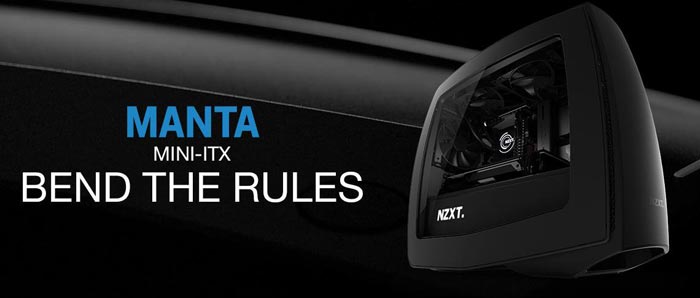
Johnny Hou, NZXT founder and CEO, told HEXUS in an email "NZXT strives to deliver meaningful innovation across every product we are designing. Manta, our first ITX case, provides an innovative and efficient answer to the ITX equation for PC users who are looking for effortless and superior build".
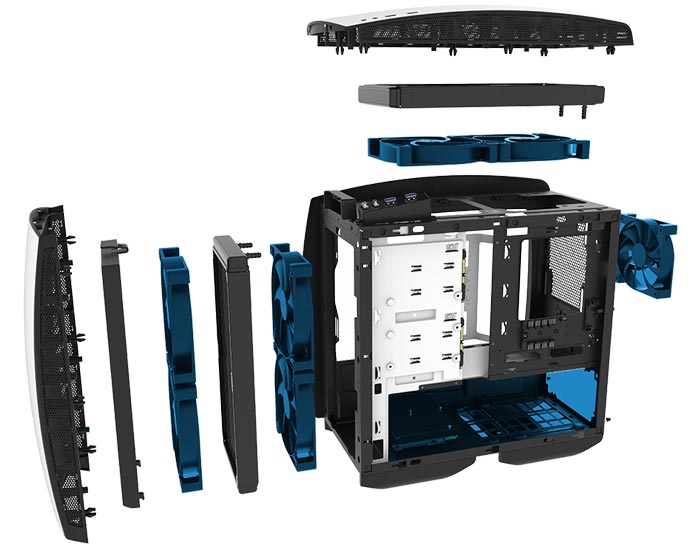
A new manufacturing process is said to be used to make the curved steel panels (new to NZXT maybe), and it proudly compares the curves and lines of the Manta mini-ITX chassis to a sport car. The look and appeal is enhanced by a curved glass side window. This large glass side panel is optional - as some prefer 'stealth'. The NZXT Manta also includes rear I/O lighting which can be turned off via the I/O panel.

I think that's enough talk about the look/quality of this chassis and it's time to consider the specs:
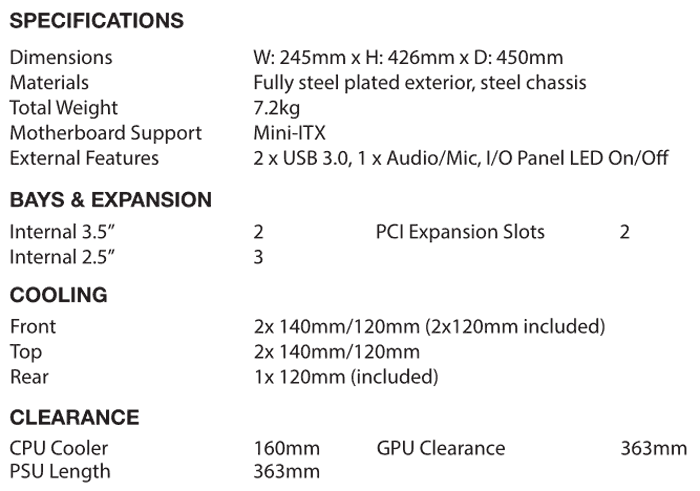
As you can see from the above specs, the Manta, despite being a mini-ITX chassis, isn't very small, or light. However it might appeal on the design front and still satisfy the requirements of many an enthusiast looking to build a new PC. In 'power user' feature terms it offers dual 280mm liquid cooling support (Kraken X61 ready), a purported double the cable management space to aid airflow, and integrated PSU shroud, a fully filtered system, and generous capacity for large graphics cards. There's an integrated PWM fan hub, SSD display and satisfactory easy access I/O panel
The NZXT Manta mini-ITX chassis is available for pre-order now in Matte White/Black, Matte Black/Red, and Matte Black with or without a windowed side panel. Price is £99.99 +VAT / €139.99 +VAT, with shipping/availability in February.
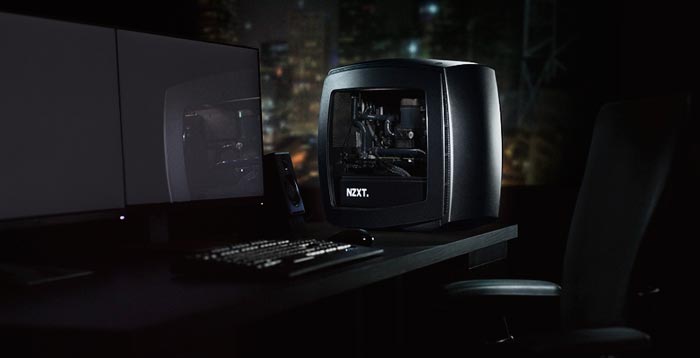
NEXT GENERATION GAMING PC
NEXT GENERATION GAMING PC
System integrators are always on the lookout for new ways of standing out from the crowd, and what better way to differentiate than with an eye-catching chassis? Deepcool's awesome-looking Tristellar certainly fits the bill, and Cyberpower is one of the first to adopt the unique enclosure as part of its Trinity range of gaming base units.
available in a choice of Intel or AMD configurations, the Trinity systems offer many of the usual hardware options but do so in a form factor that's a) different to the norm and b) guaranteed to turn heads.
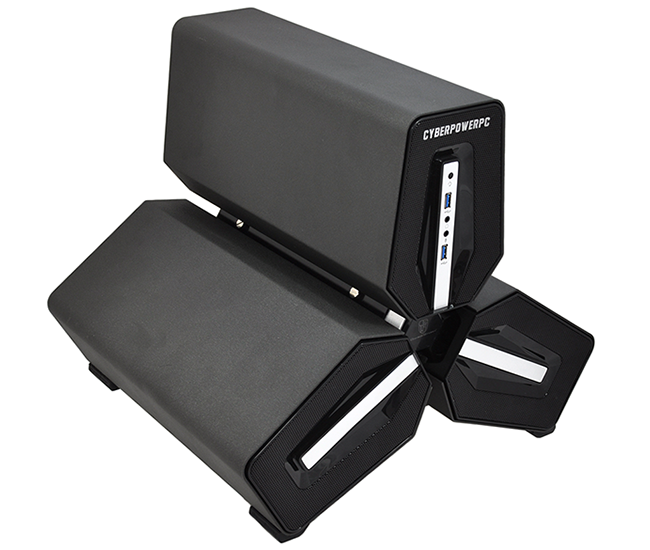
It looks fantastic, wouldn't you agree? There's definitely a sci-fi feel about the chassis - it would look right at home in an episode of Battlestar Galactica - and we suspect Cyberpower will sell plenty of units based on looks alone. Yet while Deepcool's Tristellar is up there with In Win's transforming H-Tower as one of the most intriguing enclosures we've seen in recent years, you might be wondering what's it actually like to live with.
Attempting to be functional as well as enticing, Tristellar is split into three 'cabins,' one for a graphics card measuring up to 320mm in length, another for a mini-ITX motherboard, and the third for power supply and storage. Connecting the three cabins together is a hollow, hexagonal aluminium spine that neatly allows cables to pass from one section to the next while also doubling as a backlit power button at the front end.
The arrangement works surprisingly well, and in separating the hot-running components, the theory is that the system should run suitably cool at all times. Indeed, the chassis itself is equipped with only a single fan - a 92mm intake attached to the front of the graphics-card cabin - while a pair of unfiltered vents on the chassis' base enable airflow to the CPU and PSU sections.
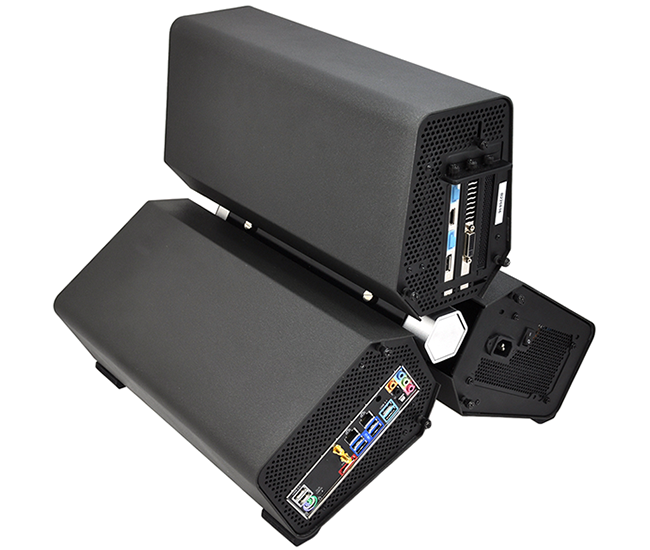
But of course, a case as quirky as this is going to come with restrictions, and these are evident in every cabin. The graphics card section is hooked-up via a short PCIe extension cable, however there's only a single PCIe interface so you'll never be privy to SLI or CrossFire expansion, and water-cooled cards such as Fury X are out of the question. The motherboard cabin is restricted to mini-ITX, and for your CPU you'll either need a low-profile air cooler or a 120mm radiator. And finally, the third cabin has a maximum PSU length of 160mm, ruling out some of today's high-end units.
Careful component selection is key, and Cyberpower has done a good job of installing some seriously powerful hardware into our Trinity 300 review sample. This is the second-best offering in the Trinity range and fetches a jaw-dropping £1,999.
For two grand, Cyberpower equips the system with an ASRock X99E-ITX/ac motherboard, a hexa-core Core i7-5820K processor overclocked to 4GHz, a Cooler Master Seidon 120 liquid cooler and a reference-cooled, mildly overclocked MSI GeForce GTX 980 graphics card (model 4GD5 OCV1). Filling in the gaps, DDR4 memory is provided by 16GB (2x8GB) of Kingston HyperX Fury, power is provided by a 600W Cooler Master supply and storage is taken care of by a 250GB Samsung 850 Evo SSD as well as a 2TB Seagate hard disk.
Undoing half-a-dozen thumb screws and removing the full-metal casings provides a better look at the internal layout. We can see a trio of 2.5in SSD bays housed alongside the graphics card, while the PSU bay has dual 3.5in hard disk trays sandwiching a slot for an optional slimline optical drive. Choosing to install the latter would neatly replace one of the silver strips on the chassis' front face, though you'd ideally want a silver drive to maintain the overall aesthetic.
Cyberpower's implementation is neat and tidy throughout, however the system's unusual chassis does raise a couple other question marks. Firstly, each cabin's metal shroud weighs over 3kg, and they combine to make the system inordinately heavy. Secondly, for what's essentially a mini-ITX PC, the Trinity 300 is by no means small. In fact, it measures 395mm (L) x 435mm (W) x 388mm (H) in size, making it one of the largest PCs to ever hold a mini-ITX motherboard.
And then there's the most obvious hurdle: the £1,999 price tag. For that amount of money, you really do expect GTX 980 Ti graphics at the very least, and if you prioritise performance, you'll know that a more traditional build would offer more bang for your buck. With Trinity 300, you pay a premium for the unique enclosure. Want to try saving a few bob by building a similar machine of your own? Deepcool's chassis alone will set you back a cool £500.
The good news for gamers who aren't enamoured with Intel's X99 platform is that Cyberpower does have a slightly cheaper Z97 variant. The Trinity 200 makes use of a Gigabyte Z97 motherboard and when equipped with, say, a Core i5-4690K processor and GeForce GTX 980 Ti graphics, would shave a couple of hundred pounds off the asking price of the X99-based Trinity 300.
There were always going to be trade-offs with a system as unorthodox as this, but none thus far can be considered deal breakers. Let's now see if performance and cooling are up to scratch.
Subscribe to:
Comments (Atom)



